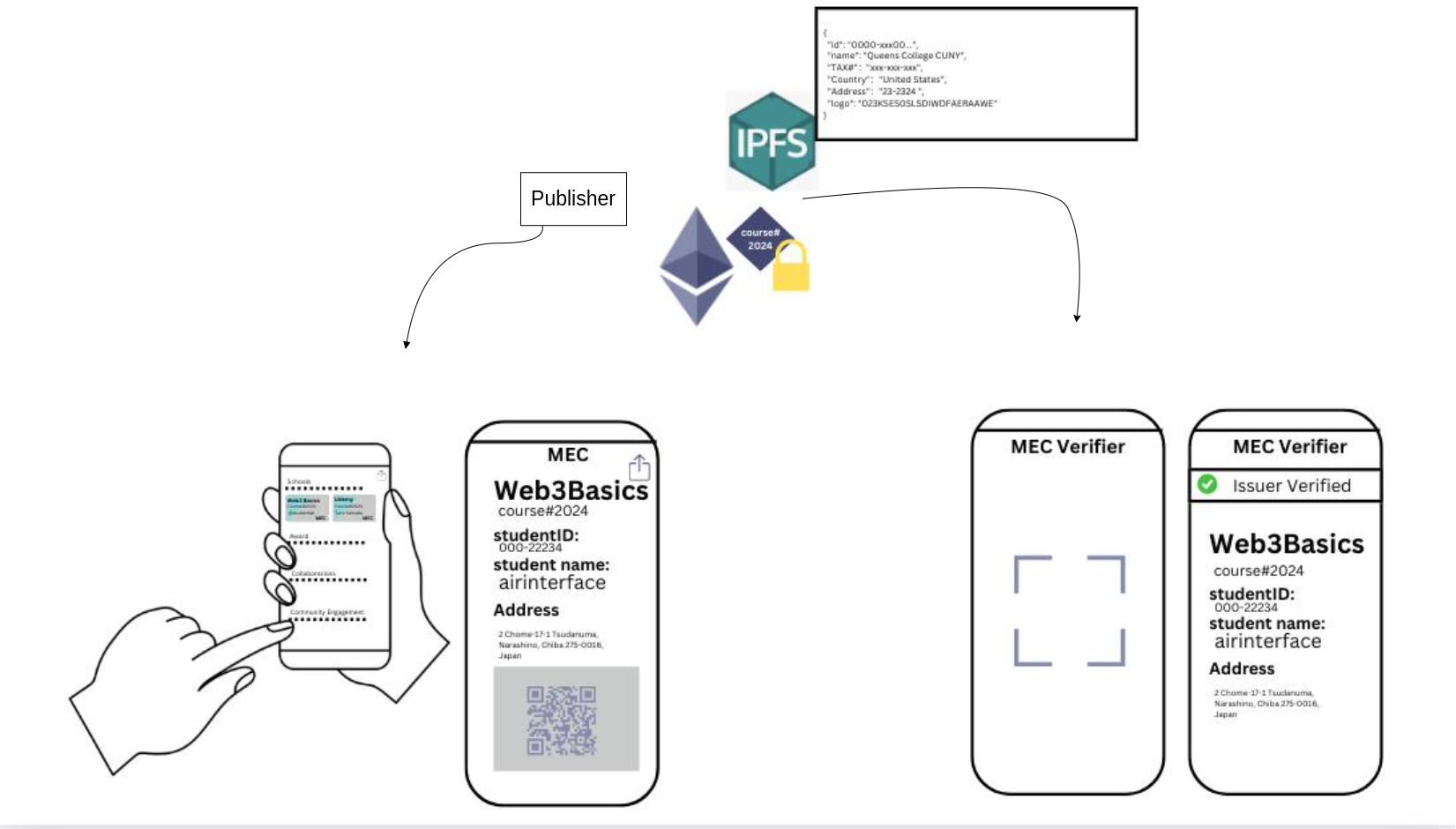Objective
To standardize and generate verifiable credentials for MicroEdgeCert and create a prototype using this module.
Prototype Scope
Develop a function to generate completion certificates as verifiable credentials, making them accessible and internationally recognized for personal use.
Focus Areas
- Showcasing individual skills and potential.
- Increasing personal motivation.
Capabilities
- Viewing skills linked to personal achievements.
- Selecting and sending class certificates at will, enabling interoperability of course credits for opportunities like studying abroad.
- Authenticating the issuer's expertise.


Reference: bitFlyer Blockchain Research 2023
Educational Institutions and Companies
Educational Institutions:
Educational institutions aim to produce students who apply their knowledge in society, contributing to their reputation and attracting new students. Research institutions foster new ideas and contribute to society, often advising governments.
Companies:
Companies assess students based on educational qualifications for employment, internships, and compliance with industry standards.
Governments and Charities:
Governments use graduation statistics for economic support decisions, international research support, and community projects, fostering connections and communication with educational institutions.
For Learners:
Students of all ages seek to contribute to society, engage in collaborative projects, and explore their interests. They aim to gain new knowledge and certifications to build their careers.
What is a Skill?
- The concept of growth (Growth Mindset).
- Fixed Mindset's impact on cultural genius and study groups.
Skill Certification
A shift from graduation certificates to skill-based certifications is necessary, ensuring value from credible institutions and international applicability.
Tasks:
- Develop standards, including internationalization.
- Determine data units and categorization for skills.
- Standardize project evaluation criteria.
Roadmap
For the project's roadmap and more details, visit MicroEdgeCerts on GitHub.

Standards (TBD)
Fund & Outreach
Document
Architecture


